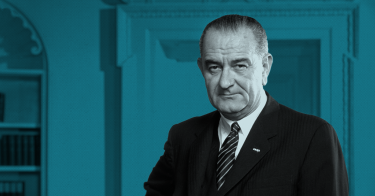While activists and lobbyists in Washington, D.C., wrangle over the federal education bureaucracy, much of the important action on school choice has been taking place in state capitals. Governors and legislatures in more than a dozen states are considering ways to give students and their families better access to quality learning opportunities that meet their individual needs.
Education savings accounts (ESAs) for elementary, high-school, and college expenses are on the leading edge of these options. Arizona lawmakers first enacted the accounts in 2011, and since that time, legislators in
This year, lawmakers in Arkansas, New Hampshire, Missouri, Georgia, Indiana, North Dakota, Texas, and West Virginia, to name a few, are considering similar laws.
Education savings accounts are like flexible spending accounts for health care, except that instead of depositing money into the account from your paycheck, the state government deposits your child’s share of school funding into the account (if you opt out of sending your child to public school in your district). ESAs allow parents to spend the funds on tutoring, online learning, textbooks, private-school tuition, educational therapies, and other education-related services and products.
Parents can use a combination of educational services based on what they think would best meet their child’s learning needs, with states determining the universe of eligible expenditures. Unused funds can often be rolled over from year to year and saved for college.
From 2011 to 2013, in Arizona, only children with special needs could qualify for ESAs, but eligibility has since been expanded. Today half of the participants are children previously assigned to failing schools, children in active-duty military families, adopted children, and Native American children on tribal lands. Arizona lawmakers are currently considering expanding the accounts to allow every student assigned to a public school the chance to participate.
Parents can use a combination of educational services based on what they think would best meet their child’s learning needs, with states determining the universe of eligible expenditures.
This expansion suits Arizona. Governor Doug Ducey has been at the forefront of pushing innovative ideas in the state, including support for easing regulations for ride-sharing services, and he’s already said he welcomes Uber’s self-driving cars. In his January 2017 state-of-the-state address, Ducey said he wants to eliminate 500 government rules and regulations this year alone to help businesses. Universal access to ESAs is an equally bold move.
That leadership has broader implications for national education policy. In establishing such a broad ESA option, Arizona would show Washington policymakers that, given the chance and with the right leadership, states will lead on education choice.
That’s an important reminder to a new administration whose heart is in the right place on school choice. There are school-choice policies that Education secretary Betsy DeVos, along with Congress, can pursue that are appropriate at the federal level. That includes reauthorizing and expanding the D.C. Opportunity Scholarship Program, expanding similar choices for military families, and creating ESAs for children attending Bureau of Indian Affairs schools. With a few exceptions, though, that’s where the federal school-choice universe should end, which is why efforts such as those in Arizona and elsewhere are so important.
Education savings accounts and other state-based solutions (such as moving toward policies that give teachers a choice as to whether they join a union, and limiting union power generally) would do more to give parents and students high-quality educational options than any new federal program, which would run the risk of regulating private schools and complicating existing state-based learning options.
The proper role for federal policymakers is to empower states to lead. Allowing states to opt out of federal programs through policies contained in the Academic Partnerships Lead Us to Success (APLUS) Act would go a long way in making space for state-based educational-choice efforts. As governors around the country have demonstrated already this legislative session, they’re eager to get to work.
This piece originally appeared in National Review



